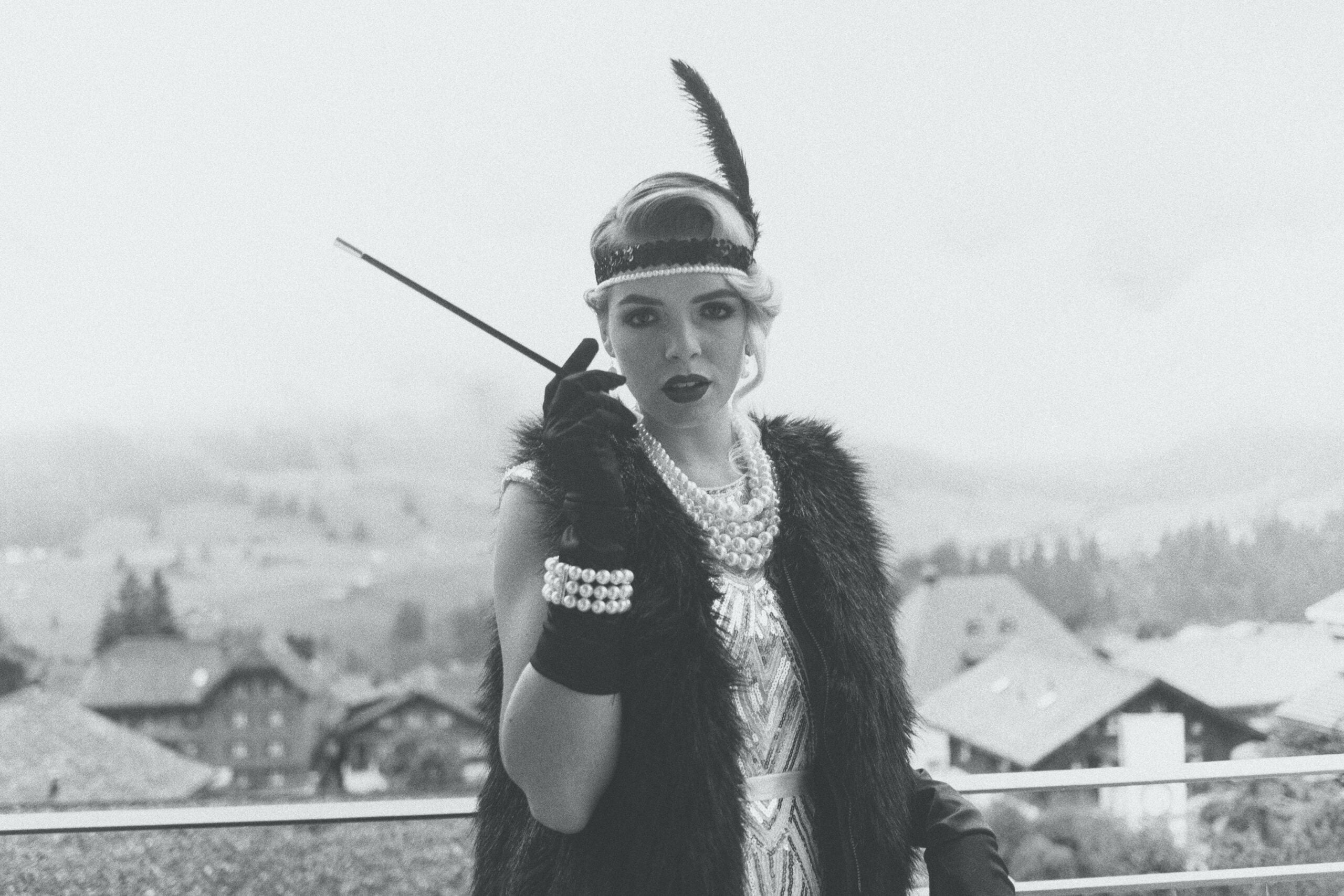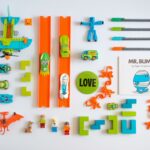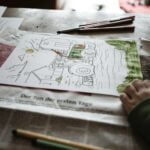Step back in time and delve into the enchanting realm of the 1920s, where toys were not just playthings, but vessels of imagination, innovation, and societal upheaval. In this article, we embark on a captivating journey, unearthing the hidden wonders of the toy industry during this transformative era. Get ready to be enthralled by the birth of consumerism, the emergence of revolutionary playthings, and the profound impact they had on shaping a new world. Brace yourself for a nostalgic ride as we unveil the creative marvels of toys in the 1920s.

Toys in the 1920s
In the vibrant and transformative era of the 1920s, toys played a significant role in shaping the cultural landscape and providing a glimpse into the evolving world of play. From the beloved Raggedy Ann to the innovative chemistry sets, the toys of this decade captured the imagination of children and adults alike. Let’s take a closer look at the creative marvels that emerged during this transformative time.
One of the defining features of toys in the 1920s was the introduction of die-cast metal cars and mass-produced model airplanes, capturing the fascination of young boys across the nation. These miniature vehicles became the epitome of innovation and marked the beginning of a toy industry that catered specifically to boys’ interests.
Quote: “The rise of die-cast metal cars and model airplanes revolutionized the toy industry, forever changing the way children played.”
While boys reveled in their miniature worlds of transportation, girls found delight in cherished dolls such as Raggedy Ann and Madame Alexander dolls. These dolls not only provided companionship but also reflected the societal values and aspirations of young girls during this era. They served as symbols of nurturing, imagination, and the desire for connection.
Quote: “Dolls like Raggedy Ann and Madame Alexander dolls became cherished companions, embodying the values and dreams of young girls in the 1920s.”
War toys also held a significant presence in the toy market, influenced by the aftermath of the Civil War. Tin or lead soldiers, toy drums, bugles, and the mesmerizing Zoetrope offered children both a way to play and a connection to historical events. These toys not only entertained but also fostered a sense of patriotism and pride.
Quote: “War toys like toy soldiers and drums allowed children to engage with history while nurturing their sense of patriotism.”
However, it wasn’t just American toy companies that shaped the landscape of toys in the 1920s. Japanese and German toy-makers flooded the American market, introducing large quantities of affordable toys that gave domestic manufacturers a run for their money. This increased competition sparked an era of innovation and forced American companies to adapt and evolve.
Quote: “The influx of affordable toys from Japan and Germany challenged American companies, pushing them to innovate and meet the changing demands of consumers.”
The 1920s also witnessed remarkable advancements in materials and mass production techniques, giving rise to an unprecedented variety of toys. Inventor Frank Hornby, known for his creation of Meccano, revolutionized the construction toy industry. Meccano allowed children to build complex models using precision-engineered metal and screws, captivating their fascination with engineering and design.
Quote: “Materials like metal and the introduction of Meccano brought a new level of excitement to construction toys, paving the way for children to explore engineering and design.”
The toy market in the 1920s was brimming with an abundance of popular toys. From the Tom Tinker Toy to the Bird Whistlers, from Flossy Flirt Dolls to Clock Work Train Sets, children had endless options to fuel their imagination and creativity. Toys like the iconic Radio Flyer Wagon, initially made of wood, became timeless symbols of imagination and adventure.
Quote: “Popular toys like the Radio Flyer Wagon and Clock Work Train Sets captured the essence of childhood wonder, fostering imaginative play and adventure.”
One phenomenon that gained immense popularity during the 1920s was the A.C. Gilbert Chemistry Sets. As science education became increasingly valued, these sets became a gateway to understanding and experimentation. Children could conduct their own chemical experiments, inspiring a sense of curiosity and sparking scientific curiosity that would shape the future.
Quote: “A.C. Gilbert Chemistry Sets exemplified the growing importance of scientific education, empowering children to explore the wonders of chemistry in their own homes.”
In summary, the toys of the 1920s reflected a transformative era filled with creativity, dynamism, and the birth of the modern toy industry. Through a diverse array of toys, children embarked on imaginative journeys, fostered their curiosity, and connected with the changing world around them. The legacy of these toys endures to this day, reminding us of a time when play truly transformed lives.
Table: Popular Toys in the 1920s
| Toy Name | Description |
|---|---|
| Raggedy Ann | Beloved doll with red yarn hair and a classic apron |
| Teddy bears | Iconic stuffed bears that brought comfort and joy |
| Crayola crayons | Vibrant coloring tools for artistic expression |
| Chemistry sets | Sets that allowed children to explore scientific wonders |
| Toy planes | Miniature airplanes that sparked imaginations |
| Trucks, tractors, buses, and trains | Toy vehicles that brought transportation to life |
| Circus toys | Playful representations of the enchanting circus world |
| Pedal cars | Miniature cars powered by pedaling |
| Mini golf | A miniature version of the popular sport of golf |
| Lincoln Logs | Classic construction toy with wooden logs |
| Tinker Toys | Interlocking wooden sticks for endless building fun |
| Yo-yos | Endlessly entertaining spinning toys |
| Tiddlywinks | A game of skill and precision |
Remember the magic of the 1920s and the toys that brought joy and inspiration to children during this transformative era. The rich tapestry of play from this decade continues to resonate with us today, reminding us of the enduring power of imagination, innovation, and the timeless essence of childhood.
Here’s an example of an active internal link using the provided anchor and URL:
Paragraph:
“Toys have always been a source of joy and fascination for children throughout the ages. But did you know that there were some truly remarkable toys in the 1920s? From whimsical dolls to innovative mechanical playthings, the 1920s was a decade filled with Fun Facts About Toys in the 1920s. Click here to dive into a world of nostalgia and discover the playful wonders of that era.”
Output in Hugo syntax:
“Toys have always been a source of joy and fascination for children throughout the ages. But did you know that there were some truly remarkable toys in the 1920s? From whimsical dolls to innovative mechanical playthings, the 1920s was a decade filled with Fun Facts About Toys in the 1920s. Click here to dive into a world of nostalgia and discover the playful wonders of that era.”
FAQ
Question 1: What were some popular toys in the 1920s?
Answer 1: Popular toys in the 1920s included Raggedy Ann, Teddy bears, Crayola crayons, chemistry sets, toy planes, trucks, tractors, buses, trains, circus toys, pedal cars, mini golf, Lincoln Logs, Tinker Toys, yo-yos, and Tiddlywinks.
Question 2: What new toys were introduced for young boys during the 1920s?
Answer 2: The 1920s saw the introduction of die cast metal cars and mass-produced model airplanes, which quickly gained popularity among young boys.
Question 3: Which dolls were popular in the 1920s?
Answer 3: Dolls such as Raggedy Ann and Madame Alexander dolls were particularly popular during the 1920s.
Question 4: Did the toy industry face international competition in the 1920s?
Answer 4: Yes, Japanese and German toy-makers shipped large quantities of cheap toys to the American market, posing competition for US companies.
Question 5: What were some notable advancements in toy production during the 1920s?
Answer 5: The 1920s marked the emergence of new materials and mass production techniques, which led to the creation of innovative toys like Meccano by inventor Frank Hornby. Additionally, the iconic “little red wagon” known as the Radio Flyer Wagon made its debut, initially made of wood.
- Mastering Leader in Spanish: The Complete Guide - April 19, 2025
- Uncovering Surprising Parallels: England Size Compared to US States - April 19, 2025
- Old Mexico Map: Border Shifts 1821-1857 - April 19, 2025
















